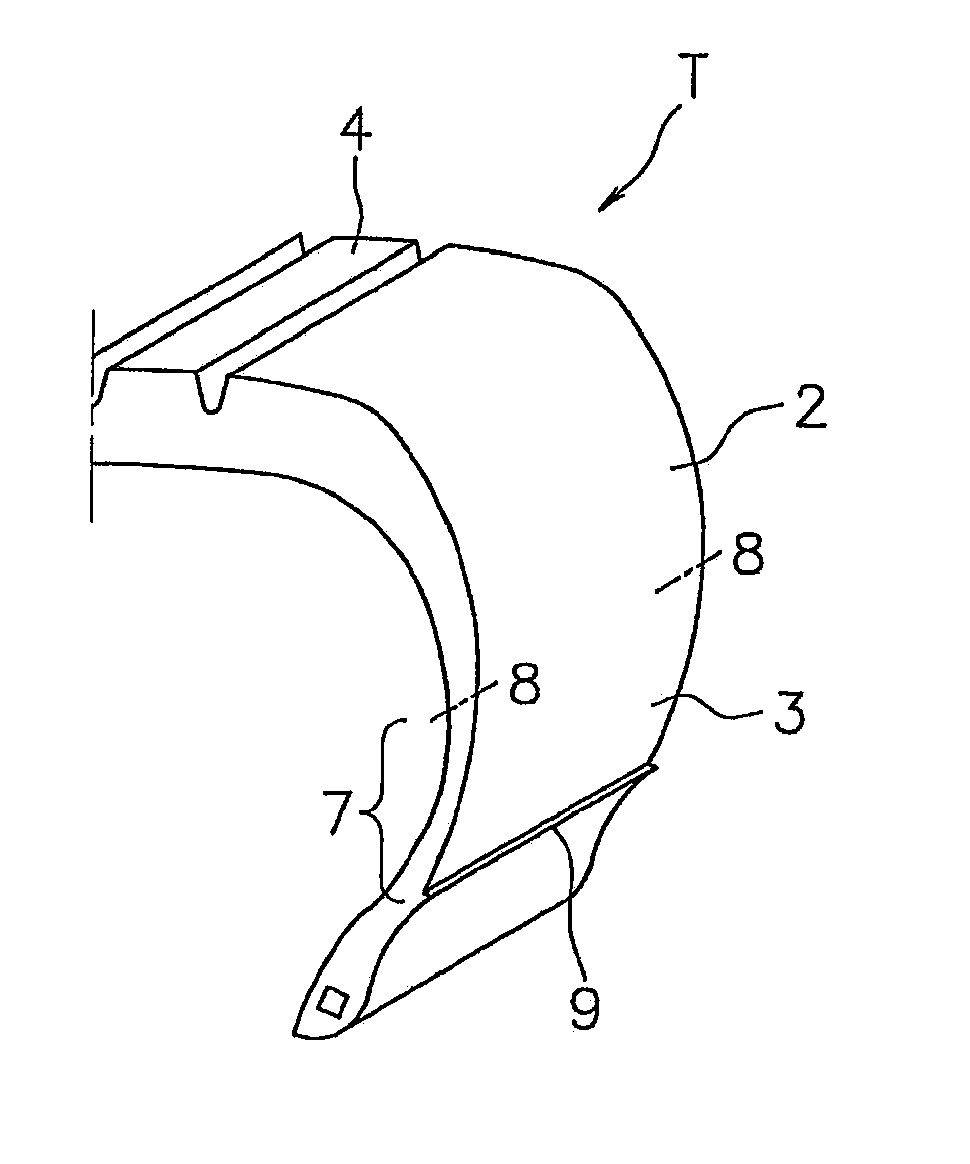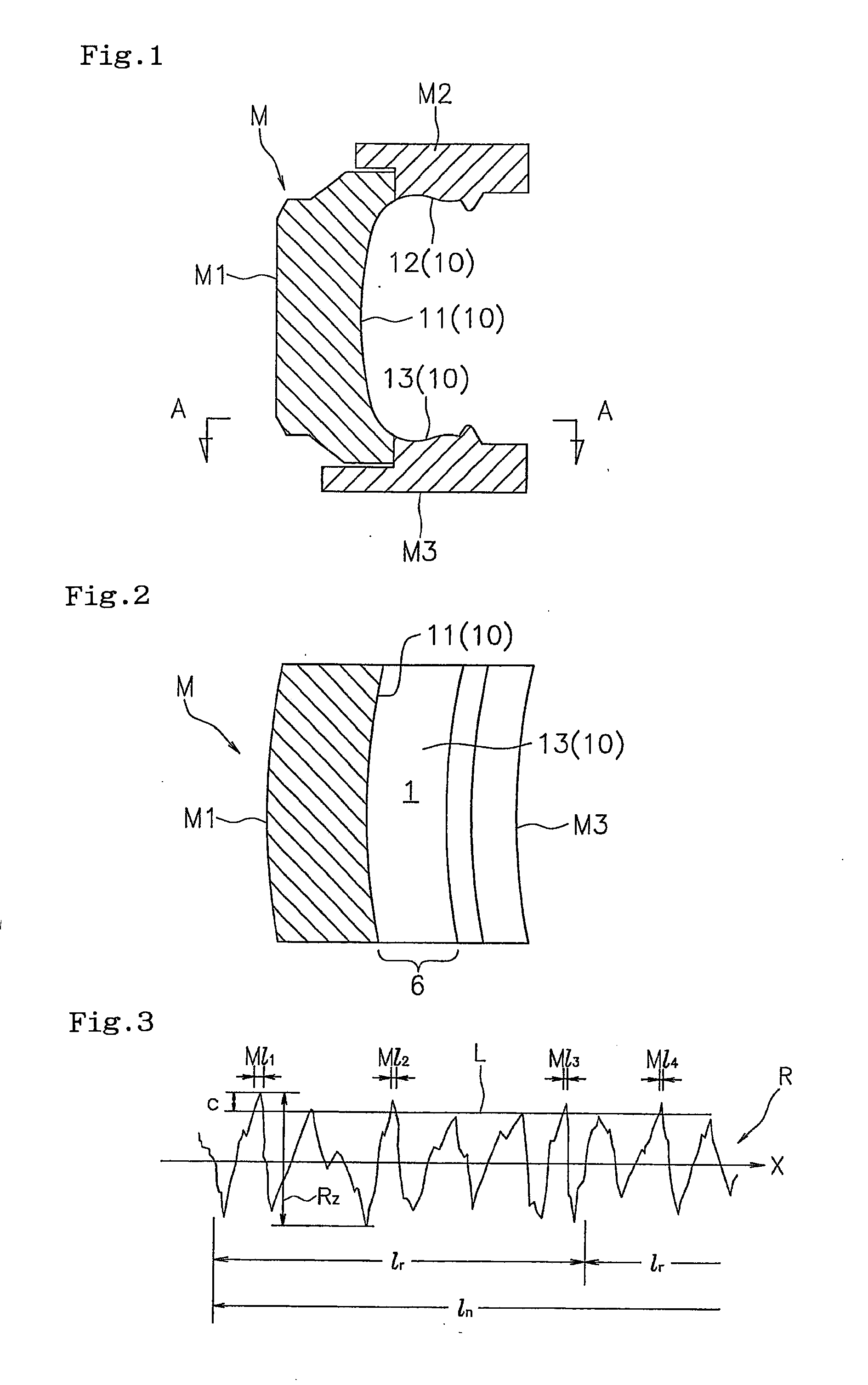Tire mold, method of manufacturing pneumatic tire and pneumatic tire
a technology of pneumatic tires and molds, which is applied in the field of tire molds, can solve the problems of rubber flow defect generation, lightness of molds, and starting point of cracks on tire outer surfaces, and achieve the effect of preventing the generation of adhesive failur
- Summary
- Abstract
- Description
- Claims
- Application Information
AI Technical Summary
Benefits of technology
Problems solved by technology
Method used
Image
Examples
example
In order to specifically show the structure and the effect of the present invention, an appearance fault and a generation condition of a crack were evaluated after a cure molding by using a mold of a tire size 11R22.5. In the used mold, a rough surface molding portion was formed in a region molding a side wall portion as shown in FIG. 2, and its surface texture was variously changed.
As an evaluation with respect to the appearance fault, the tires after the cure molding were observed in increments of twenty, and presence or absence of the adhesive failure (the rubber interface) or the generation of the lightness due to the rubber flow defect was searched. In the evaluation, a state in which the concave portion was apparently formed was set to x, a state in which no adhesive failure was confirmed by scratching a tire outer surface, but a stripe-shaped rubber interface could be recognized was set to Δ, and a state in which the rubber interface could not be recognized and no problem was...
PUM
| Property | Measurement | Unit |
|---|---|---|
| height Rz | aaaaa | aaaaa |
| surface roughness | aaaaa | aaaaa |
| height Rz | aaaaa | aaaaa |
Abstract
Description
Claims
Application Information
 Login to View More
Login to View More - R&D
- Intellectual Property
- Life Sciences
- Materials
- Tech Scout
- Unparalleled Data Quality
- Higher Quality Content
- 60% Fewer Hallucinations
Browse by: Latest US Patents, China's latest patents, Technical Efficacy Thesaurus, Application Domain, Technology Topic, Popular Technical Reports.
© 2025 PatSnap. All rights reserved.Legal|Privacy policy|Modern Slavery Act Transparency Statement|Sitemap|About US| Contact US: help@patsnap.com



